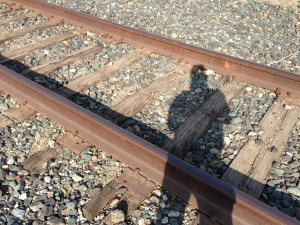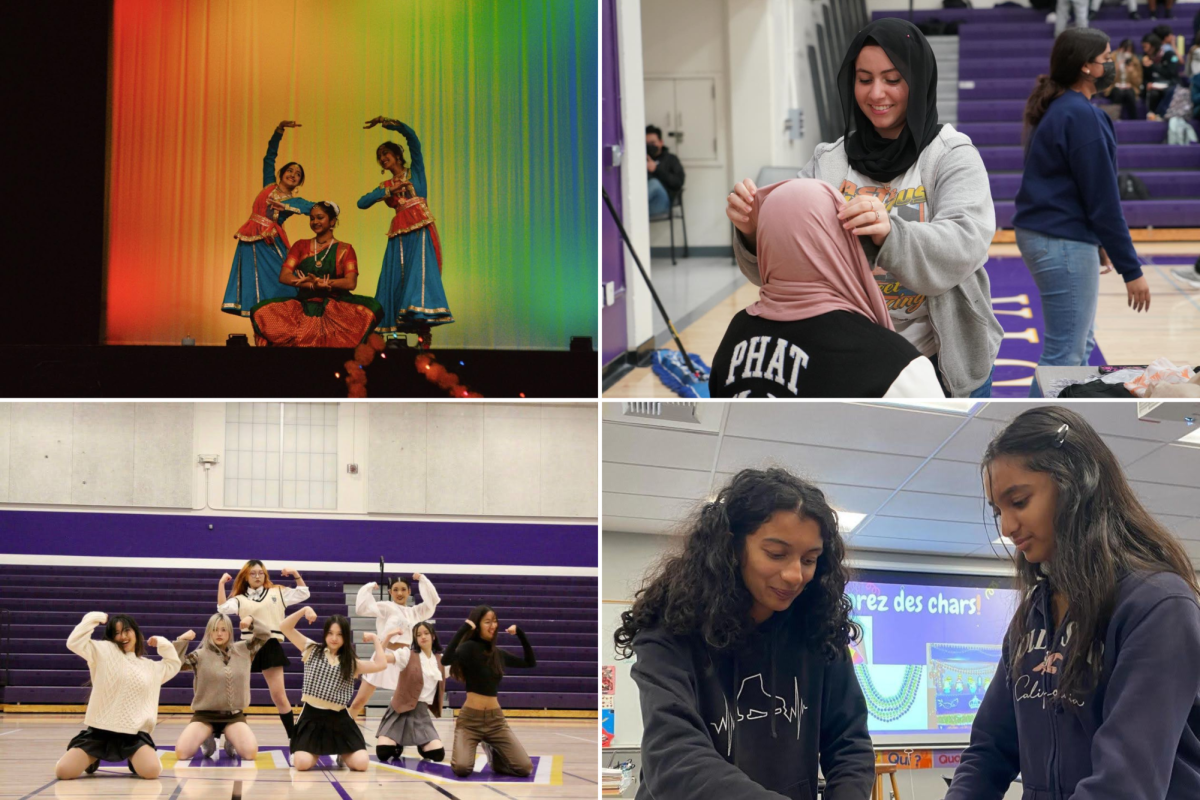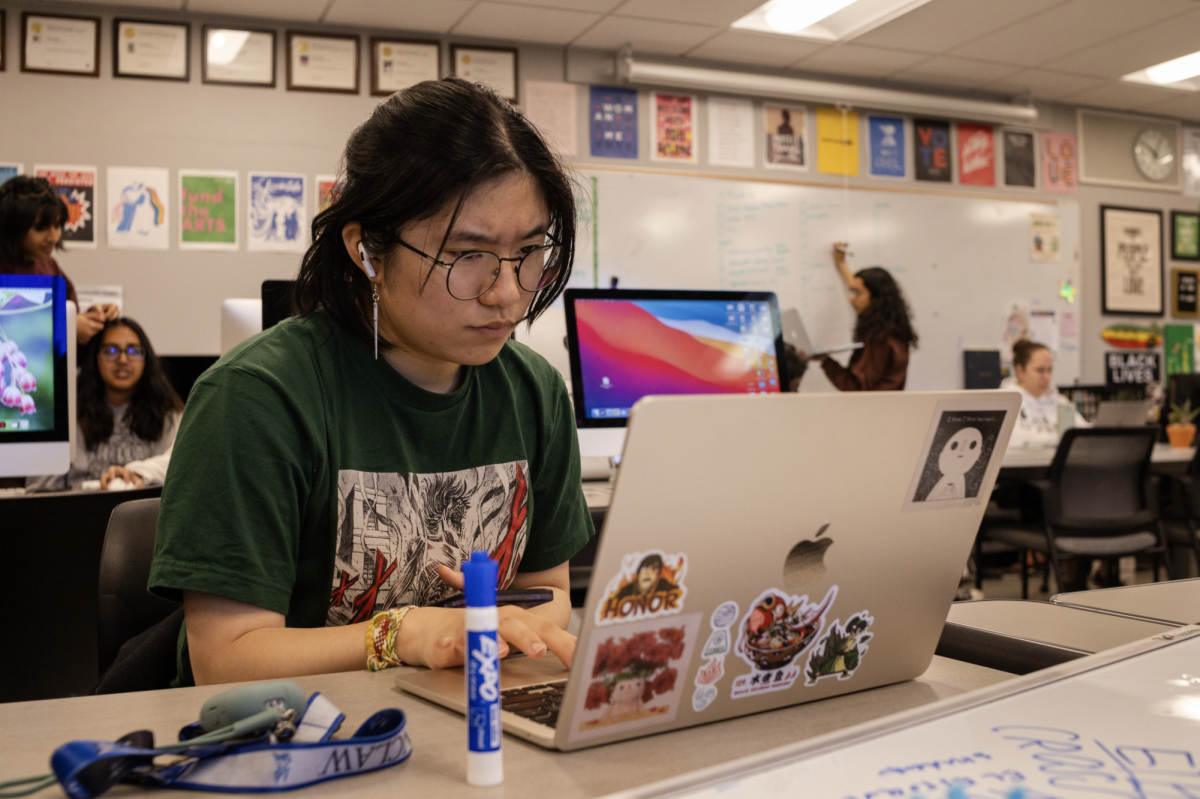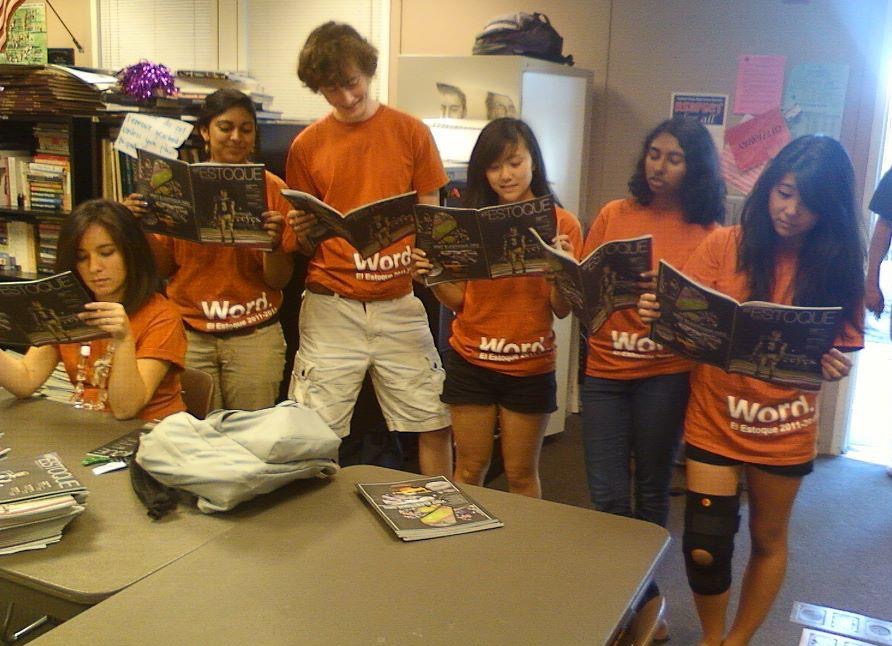Despite the trauma of a bullied childhood, one MVHS junior’s recovery proves that life gets better.

Beneath the early afternoon sun, Jane bends over the railroad tracks that once haunted her.
Keep your arms still, your body rigid. Feel the way the cold air stings, hear the pigeons squawking, feel the icy metal biting into your back.
And that was exactly what she felt that morning. That morning she laid down on the train tracks and waited.
She waited for nothing. It was still so early that it was dark, and there was no train coming. She was lying horizontally across the tracks right outside of the local 7/11 on McClellan Road, where hundreds of kids crossed on their way home from school, armed with backpacks and junk food. She knew that these tracks were mostly abandoned, that there was nothing coming for her. But she waited. She waited for a rumble, a honk, anything. Lying on a bed of iron, hoping to never wake up, she waited for three hours. Then she sat up, brushed off her jeans and walked away. She couldn’t remember if she’d fallen asleep.
“Everything was always dark,” she said. She paused and nodded at the tracks, her hands stained with rust as she knelt and brushed the metal beams.
“I know that I wasn’t going to die or anything. I was suicidal, but I didn’t really want to…you know. It was a comfort, though, just lying there a little bit. I went on walks in the morning, and I’d just stop and see [the tracks]. And I couldn’t help it,” she said. “I really couldn’t.”
This MVHS junior, who spoke to El Estoque on the condition that she remain anonymous, will be referred to as Jane for the remainder of the story.
On Oct. 17, I sat across from Jane at the Cupertino Library. She showed me the scars on her wrists, the emails she used to receive and the text messages that once caused her to toss her phone over a fence. She told me about the bully, the one person in her world that mattered the most. An older girl had tormented her since sixth grade, following her down the halls, tripping her in class and sending her degrading emails. You’re fat, ugly, stupid, a slut, you don’t deserve to be alive — that was everything she saw and everything she heard. This was her world.
“It gets better.”
But on Oct. 17, Jane sat in the library with her back straight, her chin tilted upward. Her eyes never wandered.
It had taken her a lifetime to finally stand at her full height. 5 feet 9 inches, she noted proudly.
“Here,” she said. She handed me a handwritten note, three pages long in total, written in looping cursive.
“It’s too hard to…you know, say out loud,” she said.
The first words of the note are black and bold:
“It gets better.”
The remainder of her letter details her evolution, an “evolution of happiness” as she called it. In the first paragraph, she details her years of middle school hell. Facebook messages, rumors, shoving in the hallways. She was once locked in the girls’ bathroom for half an hour.
Sadly, Jane’s experiences are all too common in American high schools, where bullying is ever-present in varying degrees.
For many kids across the country, hell is reality.
[text_styles type=”strong” link=”http://themefuse.com/” target=”_blank”]The epidemic[/text_styles]According to the National Center for Education Statistics, approximately one-third of American students aged 12 to 17 have been bullied daily. And according to El Estoque’s survey of 349 students, 47 percent have witnessed some form of bullying on campus. As abusive behavior continues to pervade the school environment, the idea of full recovery is “idyllic…but distant,” according to the California Psychological Association.
In 2010, the American Psychological Association states that childhood trauma in the form of bullying is a lead cause of Post Traumatic Stress Disorder, anxiety in the workplace and suicidal thoughts.
“According to El Estoque’s survey of 349 students, 47 percent have witnessed some form of bullying on campus.”
“When it comes down to safety, and how [bullying] affects the student, we’ll always do our best to [protect] the student. There have been a lot of…cases of self-harm, or kids trying to hurt themselves, and that’s when we step in,” Dean of Students Nico Flores said.
Since the suicide of bullied Saratoga teen Audrie Pott, the additional job of monitoring potential incidents of self-destructive behavior has fallen to the administration. Jane, however, believes that it is not the job of adults to guide students through psychological trauma.
“Yes, they have to watch out and everything. But really, I don’t think it would have made a difference in the end,” Jane said, revealing that she had been careful to hide the details of her school life from her parents and teachers.
“We feel shame…so that’s why it’s hard to say something,” Jane said. “It’s really the second step. Let other people see, don’t make it a secret. Just say some names, just admit to yourself [that] you were hurt. And then it all feels a little better.”
According to Flores, the administration continues to hope that more students will feel comfortable enough to consult the school officials if they feel emotionally or physically endangered.
“Sometimes, what will happen is that [bullied] kids won’t give us any names. We know that it’s happening…but there’s a lot of anonymity,” Flores said. “We [want] students to get the help they need.”
Sophomore Talia Yukelsen, who was bullied in elementary school for her weight, believes that her own independent ability to cope with bullying has made her stronger in high school.
“[At first] it was really hard for me to feel good about myself,” Yukelson said. “But I’m a new me now.”
After four years of hyper-awareness about her looks, Yukelson entered her high school years determined to reinvent her image and build confidence day-by-day. Though she was her own worst critic, early exposure to adversity strengthened her resolve to be independent and assured.
[text_styles type=”strong” link=”http://themefuse.com/” target=”_blank”]Misery needs company[/text_styles]After what seemed like a lifetime of emotional trauma, Jane and Yukelson now feel distant enough from their experiences to begin emotional recovery. The process is slow and grueling, often forcing them to spend hours wondering why they were targeted. Though a few scars remain, Jane’s past no longer haunts her, and though bullying has altered the course of her life, she is determined to continue living it.
“I’ve stopped taking walks,” she said, laughing. “Really, I hardly feel it anymore, that really bad urge to lie down. It took years! It took everything.”
After years of targeted abuse because of her weight, hair and clothes, Jane’s persistent suffering began to ease. The more she shrank beneath the bully’s gaze, the more she hid and sat alone at lunch, the more she slept in the back of class, too afraid to stay awake, the more her bully began to ignore her as well.
“I spent so long just always protecting myself.”
“I felt invisible! I spent a lot of time in my own head. Like one week I felt like dying, it was all so awful…and the next week, I still felt awful, but she stopped going after me so often,” Jane said. “It was like [I] disappeared.”
Her months of solitude became an unexpected blessing. She spent hours with her headphones clamped on her ears, lying back on her bed and wondering whether she could ever feel happy. She wondered if she would ever have friends, if her life was nothing but a cycle.
“Eat, sleep, eat and again,” Jane said. “That was it. I spent so long just always protecting myself. I finally had time to just think. That was the first step,” Jane said.
With no other opinions warring against her own, fewer snickers and an absence of a vicious commentary behind her back, she was finally in touch with herself. She was here, in the present. According to her letter, she was “conscious but numb. Here but not here.”
“I just realized…wow, it’s just [me] and the world, I can do whatever I want,” Jane said. “I asked myself, ‘what matters?’ I was sort of confused…but then I could start talking to other people.”
After realizing that she could hardly speak without wincing at her own words, that she was still afraid of voices and even wary of the alert sound of a text message, Jane finally consulted her parents. Though she still had trouble expressing herself verbally, the self-imposed burden of silence began to ease an inch at a time.
“Just little by little, I felt okay again, like people understood and knew,” said Jane. “And I’m lucky. My bully sort of lost interest. I guess you have to try not to always fuel them, and then they stop having fun [bullying]…but I was lucky.”
The challenges of Challenge Day[text_styles type=”strong” link=”http://themefuse.com/” target=”_blank”][/text_styles]
And in the spring, Jane got luckier.
At MVHS’ bi-annual Challenge Day, where students participate in bonding activities that allow for better emotional communication, Jane cried for the first time in two years.The fear was gone, at least for those six hours. She huddled in her plastic chair, head resting in her lap as she listened to teens recount their own bullying experiences. She remembers hugging a girl in a green shirt, hearing her whisper everything she had always wanted to say to her parents, teachers and friends. According to her letter, the “pain felt good and the silence was broken.”
“I never cried. I’m not a crying type of person, but the crying is good. Really. Like, sometimes you just gotta cry. I think it should be a requirement,” Jane said. “Kids can be so brave, you know. I’ll keep going to Challenge Day because it’s really powerful stuff.”
Challenge Day, a one-day event staged at hundreds of schools nationwide, provides students with an outlet to express their emotions and day-to-day struggles. By creating an environment of total acceptance, Challenge Day helps “lower the waterline” — a motto used to describe the destruction of barriers between students.
“It’s all about connection,” Jane said. “You see that other people have their troubles too.”
Though Challenge Day was a catalyst for recovery, allowing her to trust her peers with her experiences, Jane still struggles with feeling invisible. She still feels small.
“I feel so breakable.”
“I feel so breakable,” Jane writes in her letter. “Being alive is just hard, right?”
But she has begun to talk again, and best of all, she is making friends. She is playing sports. She is eating three meals a day, sleeping eight hours a night and indulging in every activity most teenagers find ordinary. But to her, they are miracles. Small miracles, but miracles nonetheless.
“To best sum it up,” Jane said. “I’m sixteen. And I’m feeling pretty okay.”





















